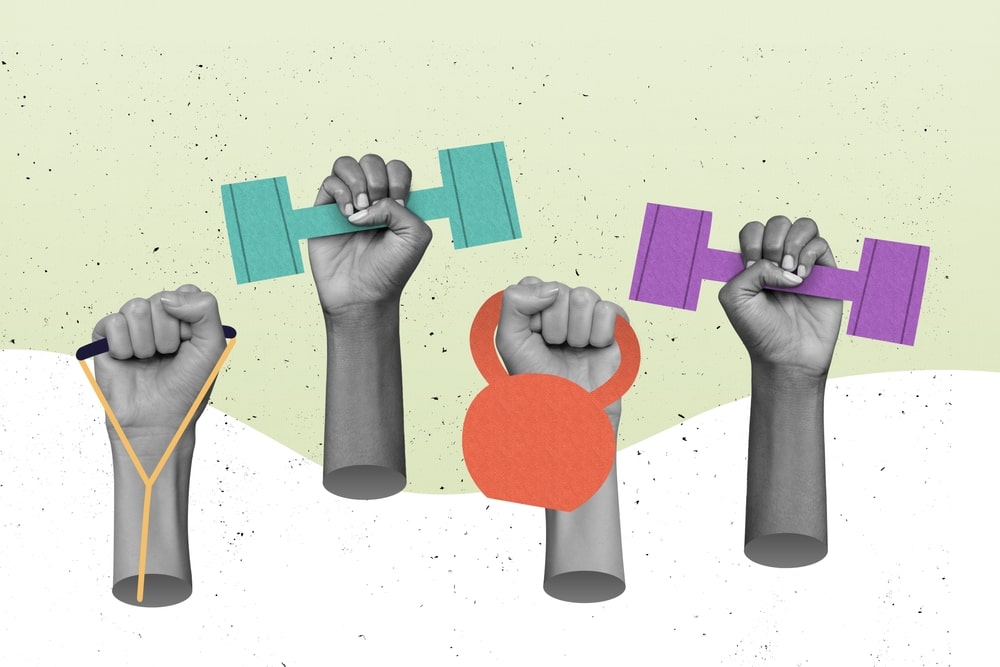The cheapest physical therapy schools in the U.S. in 2024-2025

On average, a student takes out $116,183 in loans to afford their physical therapy education.
Georgia Southern University and Arkansas State University are the cheapest DPT programs for in-state and out-of-state students, respectively.
Carroll University is the cheapest physical therapy program by median debt at graduation.
Texas is home to several of the cheapest DPT schools in the country.
The Doctor of Physical Therapy (DPT) degree is the professional degree required to become an entry-level physical therapist in the United States.
The physical therapy field requires practitioners of diverse backgrounds in its ranks to ensure effective, culturally informed patient care. However, the high cost of a DPT program is a significant barrier to entry for most aspiring physical therapists, who, on average, need to take out $116,183 in loans to fund their PT education.
Many, perhaps yourself included, might ask: does an affordable physical therapy program even exist?
In this article, discover the cheapest physical therapy schools in the U.S., ranked by median debt and total cost, along with other cost factors to consider before investing in a DPT.
How much does physical therapy school cost?
The average total cost of Doctor of Physical Therapy programs is $108,212 for in-state students and $126,034 for out-of-state students, according to the Total Cost of Education Comparison from the American Physical Therapy Association (APTA). (Note that this list contains numerical errors and may not reflect the latest rates.)
To afford a DPT program, taking out loans is nearly a given. According to a 2020 APTA report, $116,183 is the average loan amount for a PT education among recent graduates. A 2021 study found the average loan amount taken out for a DPT program to be $83,087 for public school graduates and $112,207 for private school graduates.
Taking on large amounts of debt for a DPT program is worth it, experts say, up to a point. A 2018 economic analysis found that once debt reaches $266,000, the economic value of a physical therapist degree is on par with that of a bachelor’s degree. And with $150,000 in debt, the value of a PT education is lower than all health careers (apart from veterinary and chiropractic medicine).
While the high initial cost of a DPT education can be daunting, it helps that PTs are typically well paid. The median salary for U.S. physical therapists is $99,710, according to the Bureau of Labor Statistics (BLS). Fresh DPT graduates, who are most likely to worry about student loan payment, make a bit less: physical therapists with 0-1 years of experience earn between $77-$115K, according to Glassdoor.
Cheapest physical therapy schools by debt
When searching for a Doctor of Physical Therapy program, consider how much debt you are willing to take on.
According to a 2020 APTA survey, 43% of respondents considered anticipated debt load as an important factor when deciding on a PT program. In the same survey, 70% experienced mid-to-high levels of anxiety regularly due to their student debt. Only 11% of respondents reported to be debt free, with financial assistance from family as the most reported means of support.
When using median debt as an affordability metric, which universities offer the cheapest DPT programs?
Carroll University ($41,000), Northeastern University ($41,651), and Angelo State University ($46,330) are the cheapest physical therapy schools by median debt at graduation. In general, Texas is an excellent destination for affordable DPT programs by debt.
Check out the full list of the cheapest 15 physical therapy schools below.
How we made this list: Educational programs under Physical Therapy/Therapist, i.e., CIP code 51.2308 in the higher education classification system from the Department of Education, were sorted by lowest median debt at graduation. Data comes from College Scorecard and IPEDS.
Carroll University
Waukesha, Wisconsin
The Economic Score is the combination of debt-to-earnings ratio and earningsplus. We use the economic score to determine a graduate program’s rank. The lower the economic score the better. For an analysis of how we arrive at the economic score, and a description of our data sources, please visit our methodology page.
Median earnings of all students 4 years after graduating.
The debt-to-earnings ratio is calculated by dividing student debt upon graduation by the annual salary. A debt to earnings ratio of 1 means that annual educational debt is the same as annual earnings.
The total debt accrued by the median student at the time of graduation.
Carroll University, a Presbyterian private university in Waukesha, Wisconsin, offers an entry-level Doctor of Physical Therapy program that requires the lowest debt in the country.
The 6-year DPT program at Carroll involves 2 stages: a 3-year pre-professional phase, when freshmen, sophomores, and juniors earn undergraduate credits with an emphasis in physical therapy, and a 3-year professional phase, which includes senior year and 2 years of graduate coursework and clinical experiences. Integrated Clinical Experiences courses offer diverse clinical practice opportunities in settings like the athletic training room, on-campus Therapeutic Abilities Clinic, massage clinic, and others.
Graduation rate: 97.37%
First-time NPTE pass rate: 87.5%
Northeastern University
Boston, Massachusetts
The Economic Score is the combination of debt-to-earnings ratio and earningsplus. We use the economic score to determine a graduate program’s rank. The lower the economic score the better. For an analysis of how we arrive at the economic score, and a description of our data sources, please visit our methodology page.
Median earnings of all students 4 years after graduating.
The debt-to-earnings ratio is calculated by dividing student debt upon graduation by the annual salary. A debt to earnings ratio of 1 means that annual educational debt is the same as annual earnings.
The total debt accrued by the median student at the time of graduation.
One of the country’s most affordable DPT programs by debt is at Northeastern University, a prestigious private university located in the heart of Boston. The 3-year Doctor of Physical Therapy program at Northeastern emphasizes research training and consists of both didactic and experiential learning.
DPT students take part in clinical research, consumer client engagement, simulated patient interactions, and a human cadaver lab, among other experiences. Additionally, every DPT student has the chance to work with a faculty member and present at the NU Research and Innovation Exposition.
Graduation rate: 100%
First-time NPTE pass rate: 81.4%
Angelo State University
San Angelo, Texas
The Economic Score is the combination of debt-to-earnings ratio and earningsplus. We use the economic score to determine a graduate program’s rank. The lower the economic score the better. For an analysis of how we arrive at the economic score, and a description of our data sources, please visit our methodology page.
Median earnings of all students 4 years after graduating.
The debt-to-earnings ratio is calculated by dividing student debt upon graduation by the annual salary. A debt to earnings ratio of 1 means that annual educational debt is the same as annual earnings.
The total debt accrued by the median student at the time of graduation.
Angelo State University is a public university in San Angelo, a fast-growing city in the Concho Valley of Texas. Its Doctor of Physical Therapy program is one of the cheapest in the country, with a median post-graduation debt much lower than the average among DPT graduates.
The 36-month DPT program at Angelo State offers diverse clinical experiences, intimate class sizes, and state-of-the-art facilities for on-site learning. Students can also take advantage of the many opportunities to collaborate with faculty on research projects.
Graduation rate: 98%
First-time NPTE pass rate: 90.45%
Texas State University
San Marcos, Texas
The Economic Score is the combination of debt-to-earnings ratio and earningsplus. We use the economic score to determine a graduate program’s rank. The lower the economic score the better. For an analysis of how we arrive at the economic score, and a description of our data sources, please visit our methodology page.
Median earnings of all students 4 years after graduating.
The debt-to-earnings ratio is calculated by dividing student debt upon graduation by the annual salary. A debt to earnings ratio of 1 means that annual educational debt is the same as annual earnings.
The total debt accrued by the median student at the time of graduation.
The Doctor of Physical Therapy program at Texas State University is not only one of the cheapest in the country by debt, but also gives way to high earnings – a median of $84,604 just 4 years after graduation, according to our analysis of College Scorecard and IPEDS data.
The 3-year program takes place on the Round Rock campus. Its 99-credit hour curriculum includes courses in anatomy, neuroscience, clinical decision making, therapeutic interventions, and other vital knowledge and skill areas.
Graduation rate: 100%
First-time NPTE pass rate: 81.40%
Texas Woman’s University
Denton, Texas
The Economic Score is the combination of debt-to-earnings ratio and earningsplus. We use the economic score to determine a graduate program’s rank. The lower the economic score the better. For an analysis of how we arrive at the economic score, and a description of our data sources, please visit our methodology page.
Median earnings of all students 4 years after graduating.
The debt-to-earnings ratio is calculated by dividing student debt upon graduation by the annual salary. A debt to earnings ratio of 1 means that annual educational debt is the same as annual earnings.
The total debt accrued by the median student at the time of graduation.
Texas Woman’s University (TWU) is a co-ed public university in the college town of Denton, Texas and a popular choice for physical therapy education. Its Doctor of Physical Therapy program, available at both Dallas and Houston campuses, is an affordable option for DPT students nationwide.
Students of the DPT program at TWU are well prepared for entry-level physical therapy careers through a rigorous curriculum and extensive clinical education network that includes 1,000 diverse sites across the country.
A third location in Denton has been submitted for CAPTE review and will become available in Fall of 2025.
Graduation rate: Dallas 98% | Houston 100%
First-time NPTE pass rate: Dallas 92% | Houston 98%
University of Missouri, Columbia
Columbia, Missouri
Some schools may not provide complete data to IPEDS, impacting our ability to rank them. Unavailable information is marked N/A.
Some schools may not provide complete data to IPEDS, impacting our ability to rank them. Unavailable information is marked N/A.
The debt-to-earnings ratio is calculated by dividing student debt upon graduation by the annual salary. A debt to earnings ratio of 1 means that annual educational debt is the same as annual earnings.
The total debt accrued by the median student at the time of graduation.
The University of Missouri, or Mizzou, is a large public university in the mid-sized college town of Columbia. The entry-level Doctor of Physical Therapy program at Mizzou is not only affordable but has also produced near-perfect licensure exam results in the past.
Mizzou’s 3-year DPT program features a mix of classroom lectures, lab sessions, clinical education, and problem-based learning. Students begin their clinical education at Mizzou at the free clinic, PhysZOU, where they treat clients with neurological and orthopedic conditions under faculty supervision.
Graduation rate: 98.3%
First-time NPTE pass rate: 98.3%
Sacred Heart University
Fairfield, Connecticut
The Economic Score is the combination of debt-to-earnings ratio and earningsplus. We use the economic score to determine a graduate program’s rank. The lower the economic score the better. For an analysis of how we arrive at the economic score, and a description of our data sources, please visit our methodology page.
Median earnings of all students 4 years after graduating.
The debt-to-earnings ratio is calculated by dividing student debt upon graduation by the annual salary. A debt to earnings ratio of 1 means that annual educational debt is the same as annual earnings.
The total debt accrued by the median student at the time of graduation.
Sacred Heart University is a private Roman Catholic university in Fairfield, Connecticut, a cozy town on the Long Island Sound. The school is home to an affordable Doctor of Physical Therapy program that is committed to serving the local community in its mission.
The 3-year DPT program at Sacred Heart involves local and international service learning, with an emphasis on serving locally, along with a capstone project, practice project, and diverse clinical education experiences across all PT practice areas.
Graduation rate: 93.9%
First-time NPTE pass rate: 85.2%
The University of Texas Medical Branch at Galveston
Galveston, Texas
The Economic Score is the combination of debt-to-earnings ratio and earningsplus. We use the economic score to determine a graduate program’s rank. The lower the economic score the better. For an analysis of how we arrive at the economic score, and a description of our data sources, please visit our methodology page.
Median earnings of all students 4 years after graduating.
The debt-to-earnings ratio is calculated by dividing student debt upon graduation by the annual salary. A debt to earnings ratio of 1 means that annual educational debt is the same as annual earnings.
The total debt accrued by the median student at the time of graduation.
The University of Texas Medical Branch (UTMB) at Galveston, a small public health science center known for its high-quality and low-cost medical programs, offers an excellent and affordable entry-level Doctor of Physical Therapy program.
The DPT program is offered as a residential program, a PTA-to-DPT bridge program, or a hybrid program. The hybrid program consists of a mix of online and on-site instruction and clinical training, is the first hybrid DPT program in the state. In addition to demonstrating psychomotor skills, program graduates should be competent in observation, ethical standards, professionalism, intellectual and cognitive abilities, and communication.
Graduation rate: Varies by track – 96%-100%
First-time NPTE pass rate: Varies by track – 80%-98%
Marquette University
Milwaukee, Wisconsin
Some schools may not provide complete data to IPEDS, impacting our ability to rank them. Unavailable information is marked N/A.
Some schools may not provide complete data to IPEDS, impacting our ability to rank them. Unavailable information is marked N/A.
The debt-to-earnings ratio is calculated by dividing student debt upon graduation by the annual salary. A debt to earnings ratio of 1 means that annual educational debt is the same as annual earnings.
The total debt accrued by the median student at the time of graduation.
Marquette University, a private Jesuit university in Milwaukee, Wisconsin, offers an entry-level Doctor of Physical Therapy program for aspiring physical therapists.
The DPT program at Marquette is offered either as a 6-year program, which involves earning a bachelor’s and a DPT through 3 years of undergraduate work and 3 years of graduate work, or a 3-year DPT program for bachelor’s degree holders. Students can explore specialty areas such as pediatric sports medicine, integumentary, pediatrics, orthopedics, and sports medicine.
Graduation rate: 97%
First-time FNPTE pass rate: 87.1%
University of Wisconsin, Madison
Madison, Wisconsin
The Economic Score is the combination of debt-to-earnings ratio and earningsplus. We use the economic score to determine a graduate program’s rank. The lower the economic score the better. For an analysis of how we arrive at the economic score, and a description of our data sources, please visit our methodology page.
Median earnings of all students 4 years after graduating.
The debt-to-earnings ratio is calculated by dividing student debt upon graduation by the annual salary. A debt to earnings ratio of 1 means that annual educational debt is the same as annual earnings.
The total debt accrued by the median student at the time of graduation.
The University of Wisconsin, Madison is the flagship campus of the UW public university system, named a ‘New Ivy” by Forbes in part due to favorable perceptions of its graduates among employers. Its Doctor of Physical Therapy program is affordable but competitive, with just 40 spots each year.
The 42-week clinical education component is non-concurrent, enabling students to concentrate fully on deepening their clinical skills. The curriculum consists of an integration of 3 tracks, basic science, clinical science, and clinical practice, and coursework is in cognitive, psychomotor, and affective domains. In UW Madison’s MEDiC Clinics, DPT students have the chance to work interprofessionally with peers from physician assistant, MD, and nursing, and other programs.
Graduation rate: 100%
First-time NPTE pass rate: 100%
Ohio University, Main
Athens, Ohio
The Economic Score is the combination of debt-to-earnings ratio and earningsplus. We use the economic score to determine a graduate program’s rank. The lower the economic score the better. For an analysis of how we arrive at the economic score, and a description of our data sources, please visit our methodology page.
Median earnings of all students 4 years after graduating.
The debt-to-earnings ratio is calculated by dividing student debt upon graduation by the annual salary. A debt to earnings ratio of 1 means that annual educational debt is the same as annual earnings.
The total debt accrued by the median student at the time of graduation.
Ohio University (OU), a large public research university in Athens recognized for its quality academics and low tuition, offers one of the most affordable DPT programs in the country.
The 9-semester, 3-year Doctor of Physical Therapy program at OU features an extensive clinical education network, made up of over 300 sites throughout the country and the UK. Specialization Electives is a unique opportunity for students to deepen their skills in specialties such as orthopedics, neurorehabilitation, geriatrics, and women’s health.
Graduation rate: 100%
First-time NPTE pass rate: 94%
University of Wisconsin, Milwaukee
Milwaukee, Wisconsin
The Economic Score is the combination of debt-to-earnings ratio and earningsplus. We use the economic score to determine a graduate program’s rank. The lower the economic score the better. For an analysis of how we arrive at the economic score, and a description of our data sources, please visit our methodology page.
Median earnings of all students 4 years after graduating.
The debt-to-earnings ratio is calculated by dividing student debt upon graduation by the annual salary. A debt to earnings ratio of 1 means that annual educational debt is the same as annual earnings.
The total debt accrued by the median student at the time of graduation.
A member of the University of Wisconsin public university system, the University of Wisconsin, Milwaukee (UWM) offers an affordable Doctor of Physical Therapy program, the only one in the Milwaukee area.
This competitive DPT program enrolls 36 students each year. Students benefit from small classes, ample opportunities for collaboration with faculty on research, and early exposure to clinical experiences, which begin the 2nd week of the program. Those interested in pursuing specialist certification in orthopedics can benefit from the 1-year post-graduate orthopedic residency program offered through the school’s partnership with the Zablocki Veterans Affairs Hospital.
Graduation rate: 100%
First-time NPTE pass rate: 94%
Cleveland State University
Cleveland, Ohio
Some schools may not provide complete data to IPEDS, impacting our ability to rank them. Unavailable information is marked N/A.
Some schools may not provide complete data to IPEDS, impacting our ability to rank them. Unavailable information is marked N/A.
The debt-to-earnings ratio is calculated by dividing student debt upon graduation by the annual salary. A debt to earnings ratio of 1 means that annual educational debt is the same as annual earnings.
The total debt accrued by the median student at the time of graduation.
The Doctor of Physical Therapy program at Cleveland State University (CSU), a mid-sized public university in the heart of Cleveland, is among the first PT programs founded in the area.
The program curriculum includes 41 weeks of clinical education.:34 weeks of full-time clinical practice courses, leading to entry-level competency, and 7 weeks of final elective practicum in a non-traditional PT area. DPT students at CSU benefit from extensive clinical experience opportunities, with over 140 clinical sites to choose from in Ohio and across the country; in the Cleveland area, these include sites like the Cleveland Clinic Foundation and Cleveland Metro Health Medical Center.
Graduation rate: 92%
First-time NPTE pass rate: 94%
Touro University
New York, New York
The Economic Score is the combination of debt-to-earnings ratio and earningsplus. We use the economic score to determine a graduate program’s rank. The lower the economic score the better. For an analysis of how we arrive at the economic score, and a description of our data sources, please visit our methodology page.
Median earnings of all students 4 years after graduating.
The debt-to-earnings ratio is calculated by dividing student debt upon graduation by the annual salary. A debt to earnings ratio of 1 means that annual educational debt is the same as annual earnings.
The total debt accrued by the median student at the time of graduation.
Touro University is a private Jewish-sponsored university in New York City and the largest of its kind in the country. Its Doctor of Physical Therapy program, offered on both Long Island and Manhattan campuses, leaves students with debt that is much lower than average.
The DPT curriculum at Touro includes courses in foundational science, clinical science, behavioral science, research, and clinical practice. Students alternate between their academic and clinical coursework to immediately apply what they have learned in the classroom in a clinical experience.
Graduation rate: Long Island 97% | Manhattan 94.1%
First-time NPTE pass rate: Long Island 97% | Manhattan 97.1%
Indiana University, Purdue University-Indianapolis
Indianapolis, Indiana
The Economic Score is the combination of debt-to-earnings ratio and earningsplus. We use the economic score to determine a graduate program’s rank. The lower the economic score the better. For an analysis of how we arrive at the economic score, and a description of our data sources, please visit our methodology page.
Median earnings of all students 4 years after graduating.
The debt-to-earnings ratio is calculated by dividing student debt upon graduation by the annual salary. A debt to earnings ratio of 1 means that annual educational debt is the same as annual earnings.
The total debt accrued by the median student at the time of graduation.
Indiana University Indianapolis, or IU Indianapolis, is a public university in Indianapolis that was formerly part of a collaboration with Purdue University.
The 3-year Doctor of Physical Therapy program at IU sits at the heart of a vast network of Indianapolis-area hospitals and healthcare buildings, offering a wide range of in-patient and out-patient clinical partnerships to choose from. The curriculum features courses in clinical physiology, pathophysiology, pharmacology, neurorehabilitation, functional anatomy and clinical biomechanics.
A dual DPT and Ph.D. in health and rehabilitation sciences is also offered.
Graduation rate: 100%
First-time NPTE pass rate: 95%
Most affordable PT schools by total cost
Below are the cheapest DPT programs based on lowest total costs, as reported by APTA in its Total Cost of Education Comparison.
These rankings are indicative only; always check the total fees of a DPT program in its Student Financial Fact Sheet, which all accredited schools are required to have. If a school doesn’t have one, contact their program officers.
Cheapest DPT programs for in-state students
Total costs for DPT programs are about 14% lower for in-state students than out-of-state, a calculation based on cost data reported by APTA. The average in-state total cost for DPT programs is $108,212.
Georgia Southern University’s DPT program is the cheapest in the country for in-state students, with a $35,478 total cost.
The below schools offer the cheapest Doctor of Therapy programs for in-state students by total cost, with the 20 lowest ranging from $35,478 to $53,755.
Source: American Physical Therapy Association, Total Cost of Education Comparison
Cheapest DPT programs for out-of-state students
On average, a DPT program costs out-of-state students $126,034, according to APTA. With a total cost of $57,412, Arkansas State University is home to the cheapest DPT program in the country for out of staters.
Ranked by lowest total costs, the below schools offer the most affordable DPT programs for students coming from out of state.
| University | State | Total cost |
|---|---|---|
| Arkansas State University | AR | $57,412 |
| Youngstown State University | OH | $58,884.32 |
| East Carolina University | NC | $65,881 |
| University of Wisconsin – Stevens Point | WI | $71,341 |
| Northern Illinois University | IL | $75,286 |
| University of Texas Health Science Center at San Antonio | TX | $75,366 |
| Langston University | OK | $77,651 |
| University of Texas Southwestern Medical Center at Dallas | TX | $78,169 |
| Angelo State University | TX | $79,323 |
| Bradley University | IL | $84,100 |
| University of the Cumberlands | KY | $84,672 |
| University of Tennessee at Chattanooga | TN | $85,525.03 |
| Oklahoma City University | OK | $85,915 |
| Harrisburg University of Science and Technology Doctor of Physical Therapy | PA | $86,670 |
| University of Texas Medical Branch at Galveston, Bridge PTA to DPT program | TX | $87,114 |
| University of Central Arkansas | AR | $87,373 |
| Walsh University | OH | $86,610 |
| University of South Florida | FL | $90,805 |
| Texas State University | TX | $91,192 |
| Texas Tech University Health Sciences Center | TX | $91,278 |
Source: American Physical Therapy Association, Total Cost of Education Comparison
Most affordable online DPT programs
Due to the need for clinical experiences and other in-person elements, entry-level DPT programs can’t be delivered entirely online. However, some are offered through a hybrid (a mix of online and in person) delivery format.
KEY TAKEAWAY
Fully online DPT programs typically lead to a Transitional Doctor of Therapy (tDPT) degree (officially called a post professional DPT degree). A tDPT is for practicing physical therapists who already hold a PT degree, and is designed to bridge the gap between their prior PT education and the requirements of the DPT degree.
| Program | Degree | Format | Median debt |
|---|---|---|---|
| Winston-Salem State University | tDPT | Online | $61,191 |
| The University of Texas Medical Branch at Galveston | DPT | Hybrid | $61,500 |
| University of Kansas | DPT | Hybrid | $61,500 |
| University of Utah | DPT | Hybrid | $72,840 |
| Arcadia University | DPT | Hybrid | $87,258 |
| Shenandoah University | tDPT | Online | $114,000 |
| Andrews University | tDPT | Online | $118,500 |
How to pay for DPT school
Going to a public school in your state is probably the best way to keep the cost of a DPT program relatively low. That said, DPT degrees are expensive regardless of the institution offering them, and you’ll need to know how to finance yours.
Options for paying for a Doctor of Physical Therapy (DPT) degree




Unfortunately, few payment options for DPT programs exist that don’t involve taking out loans.
Even APTA, in its report “Impact of Student Debt on the Physical Therapy Profession,” acknowledges the lack of non-loan options for paying for PT school.
Since you’ll likely be paying close to the ticket price of a DPT school, don’t hesitate to bring any financial concerns to the schools you’re considering.
For instance, you could ask about average debt and post-graduation earnings among their graduates (these figures are also available in our top 20 physical therapy school rankings).
For more ideas on your payment options, APTA’s Financial Solutions Center offers financial literacy tips and other strategies for paying off DPT school.
Final thoughts
Wherever you end up, the cost of your physical therapy degree will add up. So, in your search for a DPT program, try to prioritize value over prestige to ease the long-term financial burden of the degree. In other words, choose the most affordable accredited DPT program you get into.
For DPT programs, the school name truly doesn’t matter. Whether your school is CAPTE-accredited, which is required for entry-level physical therapist licensure, does.
For further reading, we’ve compiled a list of the best physical therapy programs by value, based on net cost and post-graduation earnings.
Still not sold on physical therapy as the right career for you, and want to explore your options? Take our degree quiz below to discover the best programs by field.




